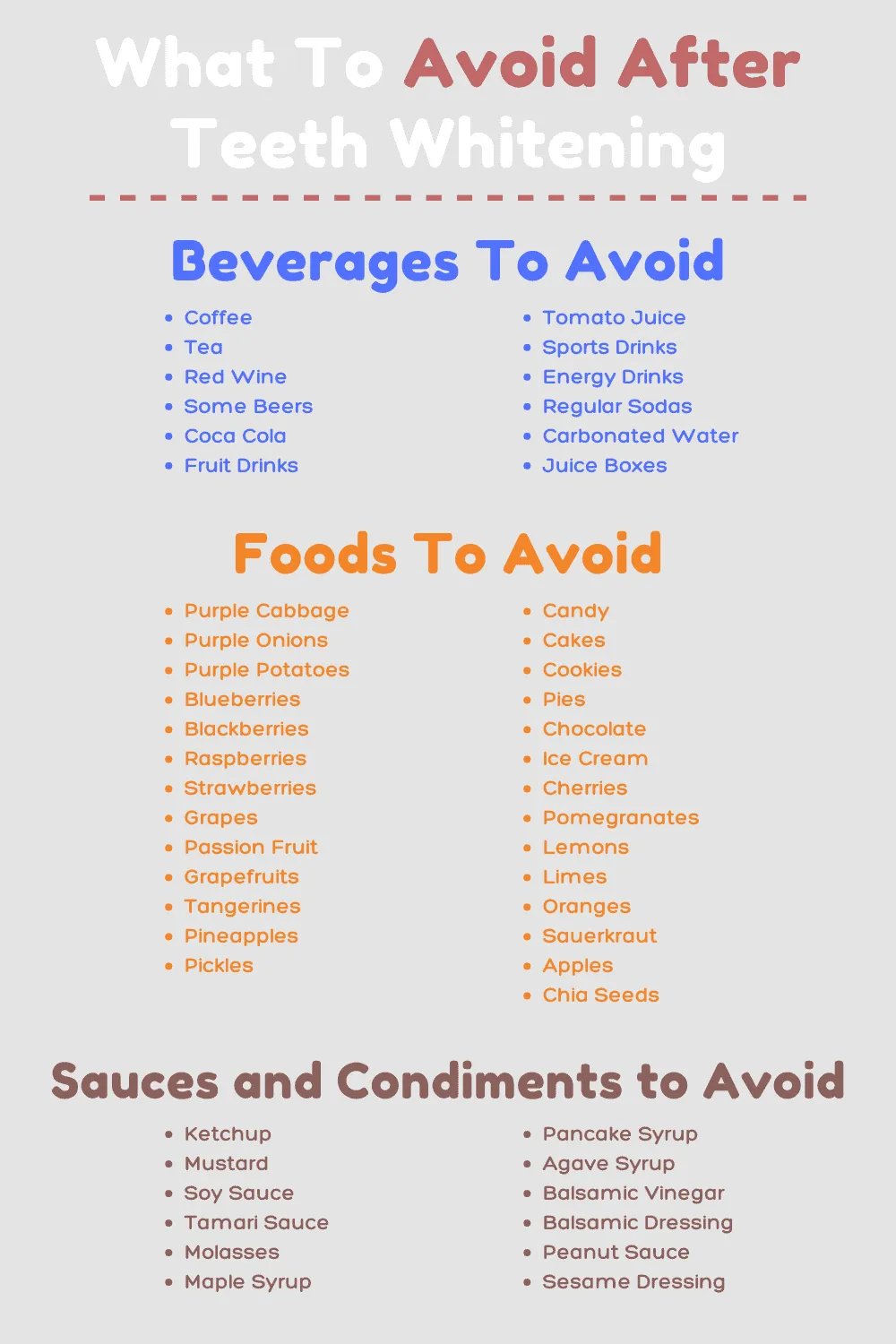Foods to Eat After Teeth Whitening
Undergoing teeth whitening is a significant investment in your smile, and the food you consume afterward plays a crucial role in maintaining those dazzling results. While you might be tempted to immediately indulge in your favorite treats, it’s essential to follow a specific dietary plan to avoid staining your newly whitened teeth. This guide offers insights into the best food choices to make post-whitening, ensuring your teeth stay bright and your smile remains radiant. The focus should be on foods that won’t compromise the whitening treatment, allowing you to enjoy a vibrant smile for longer.
White and Neutral Foods
One of the safest approaches immediately after teeth whitening is to consume white and neutral-colored foods. These foods are less likely to cause staining because they lack the strong pigments that can adhere to the enamel of your teeth. By choosing foods in this color range, you minimize the risk of undoing the whitening process. Prioritizing these food options in the first few days after your treatment will help you protect the investment you’ve made in your smile.
Why White Foods are Best
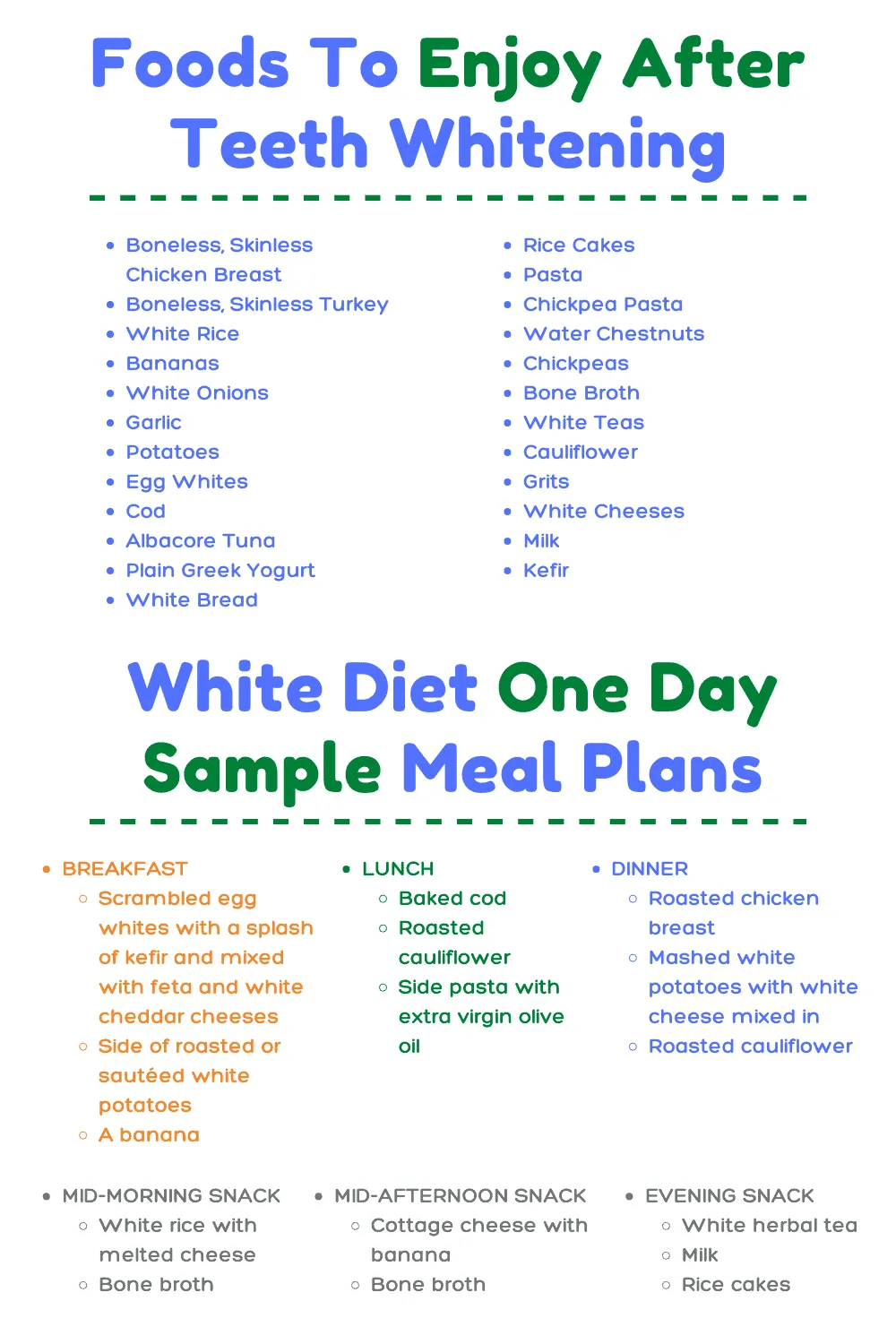
White foods are ideal because they contain minimal color pigments. These pigments are what cause staining. After teeth whitening, the enamel is more porous. This means it’s more susceptible to absorbing colors from the foods and drinks you consume. Staining can occur quickly, and some foods can counteract the whitening effects entirely. White foods provide a neutral base, so you can safely consume them without compromising your results. The goal is to give your teeth time to stabilize after treatment.
Examples of White Foods
Several white foods are safe and nutritious options after teeth whitening. Consider incorporating these into your meals to help maintain your bright smile. Think about items like: white rice, plain pasta, cauliflower, skinless chicken or turkey, white fish like cod or halibut, and plain yogurt (without added colors or fruit). These foods provide essential nutrients without the risk of staining. They are generally mild and easy to digest.
Soft Food Choices
Besides color, the texture of your food matters. After teeth whitening, your teeth might be slightly more sensitive. Soft foods help to reduce any discomfort and allow your teeth to recover without unnecessary pressure. These choices are easy to chew and gentle on your teeth, avoiding any potential strain. When selecting your post-whitening meals, focus on foods that require minimal chewing. The goal is to be kind to your newly whitened teeth while supporting your dietary needs.
Why Soft Foods are Recommended

Soft foods are easier to chew and put less stress on your teeth, which can be beneficial immediately after a teeth whitening procedure. Your teeth may be slightly sensitive, and harder foods could cause discomfort. Additionally, avoiding excessive chewing minimizes the risk of any potential abrasion to the enamel during this sensitive period. Soft foods provide essential nutrients without adding unnecessary stress. The soft texture helps to keep the teeth safe.
Examples of Soft Foods
Several soft food options are suitable to eat after teeth whitening. Consider including foods such as: mashed potatoes, scrambled eggs, well-cooked oatmeal, smoothies (made with white or light-colored fruits and vegetables), and cottage cheese. These choices provide a range of nutrients while being gentle on your teeth. Soft options also allow you to enjoy your meals without worrying about potential staining or sensitivity.
Foods to Avoid After Teeth Whitening
Avoiding certain foods is essential to maintain your newly whitened smile. Many foods can stain your teeth and reverse the effects of the whitening treatment. The foods to avoid are typically high in pigments or have acidic properties. Sticking to a restricted diet for a short period helps ensure the best possible results from your teeth whitening. Prioritizing a careful diet in the initial days and weeks post-treatment is crucial.
Highly Pigmented Foods
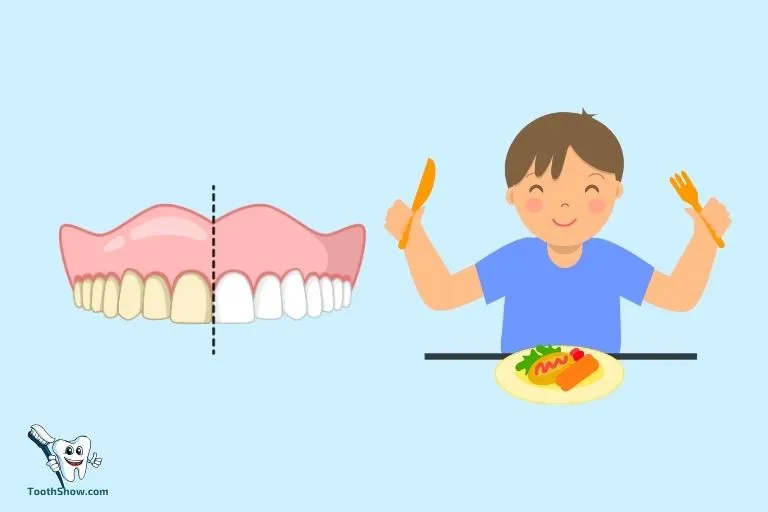
Highly pigmented foods are a major culprit when it comes to staining teeth. These foods contain intense colors that can easily adhere to the enamel. The pigments seep into the porous surface of your teeth and leave stains. For example, dark-colored berries, beets, and deeply colored sauces can all contribute to discoloration. Avoiding these foods is essential to preventing stains and keeping your smile bright.
Foods to avoid
Here is a list of highly pigmented foods that should be avoided after teeth whitening: berries (blueberries, blackberries, raspberries), beets, soy sauce, balsamic vinegar, curry, tomato-based sauces, and dark chocolate. These foods have intense pigments that can quickly stain your teeth. Consider a brief hiatus from these foods to protect your investment in teeth whitening.
Acidic Foods
Acidic foods can be detrimental to your teeth after whitening. Acids can erode the enamel, making your teeth more vulnerable to staining. In addition, acidic foods can increase tooth sensitivity, which is common immediately following the whitening procedure. Limiting your intake of these foods is an effective way to protect your teeth and maintain your desired results. It provides an opportunity for your teeth to recover from the procedure.
Why Acidic Foods are Harmful
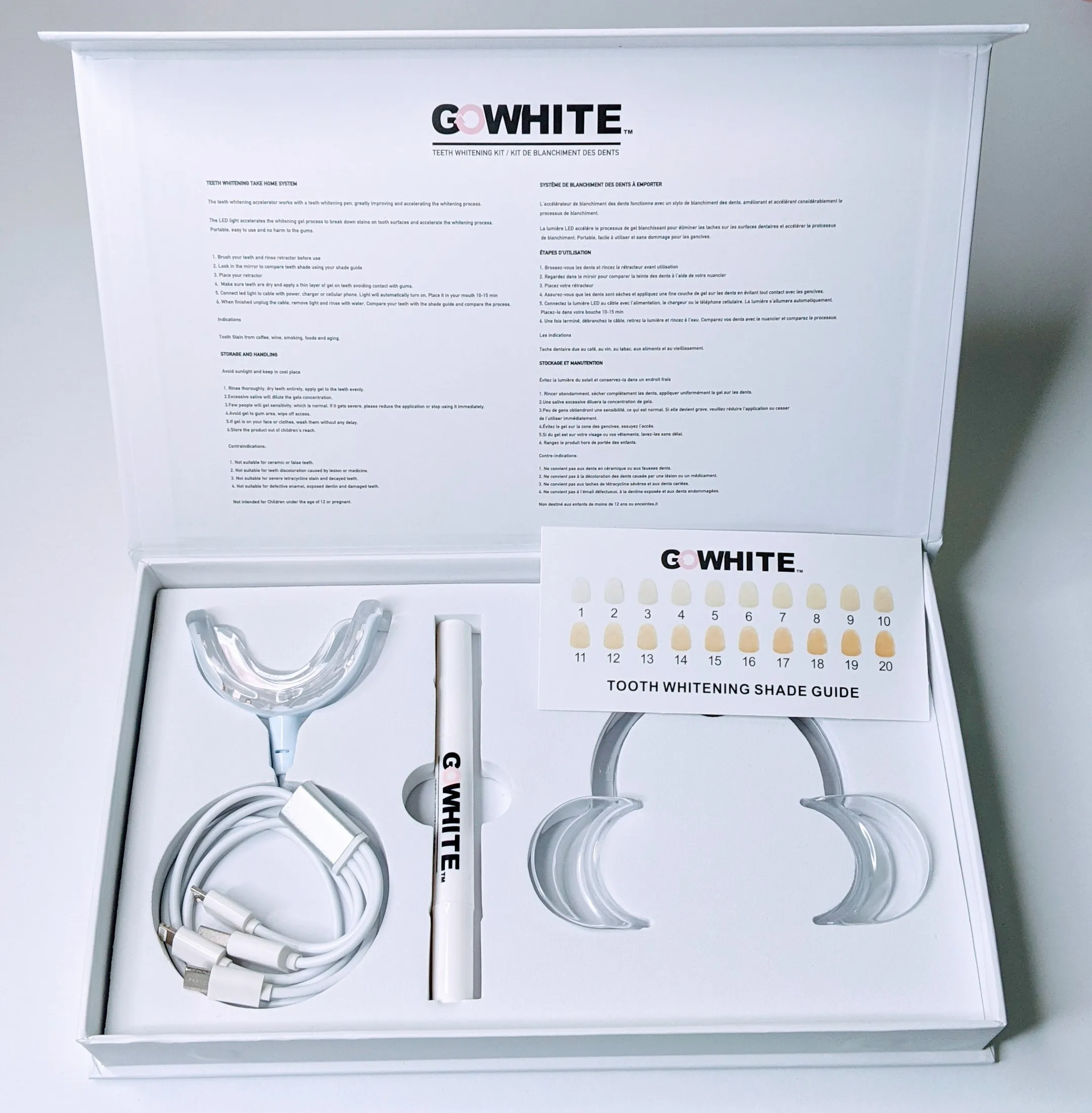
Acidic foods can weaken your tooth enamel. Enamel is the outermost protective layer of your teeth. When acids erode this layer, the teeth become more susceptible to stains. Moreover, they can also cause increased sensitivity. The combination of weakened enamel and increased sensitivity can make it challenging to enjoy your meals. Therefore, it is best to avoid acidic foods for a period to protect the enamel and reduce sensitivity.
Examples of Acidic Foods
Avoid foods high in acidity after teeth whitening, such as citrus fruits (lemons, oranges, grapefruits), tomatoes, vinegar, pickles, and carbonated beverages. These items can damage the enamel and increase the risk of staining. Limiting your consumption of acidic food for a short time can make a big difference in maintaining a brighter smile.
Foods that Can Stain Your Teeth
Some foods, regardless of their acidity, contain strong color pigments that can stain your teeth. These pigments can easily attach to the enamel, especially after the whitening procedure. It is important to be mindful of what you eat, so you maintain your newly brightened smile. The goal is to make the right food choices. You’ll be able to protect the aesthetic results of your treatment.
Examples of Staining Foods
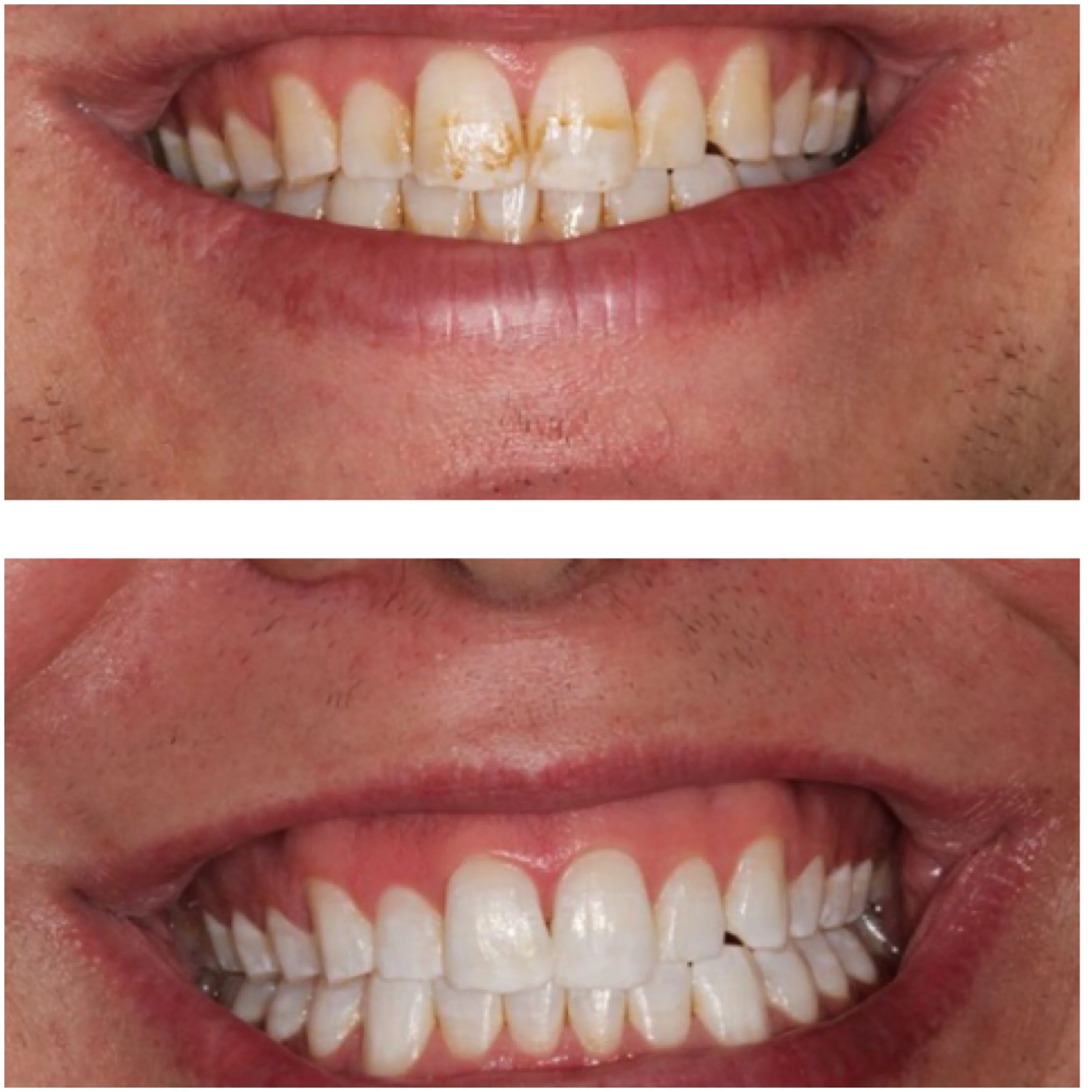
Examples of foods that stain teeth include: soy sauce, balsamic vinegar, curry, tomato-based sauces, and dark chocolate. These foods should be avoided. Remember, it’s best to exercise caution when consuming foods with intense colors. Make choices that are mindful of the whitening treatment you received.
Drinks to Avoid
In addition to food, certain beverages can significantly impact the brightness of your teeth after whitening. These drinks contain strong pigments and acidity that can quickly cause staining and erosion. Avoiding these drinks is as critical as making careful food choices, particularly in the first few days and weeks. Being mindful of what you drink will help you preserve the results of your treatment.
Coffee, Tea, and Dark Beverages
Coffee, tea, and dark beverages are notorious for staining teeth. These drinks contain strong pigments called tannins, which can quickly adhere to the enamel. The dark color of these beverages can lead to discoloration and diminish the whitening effects. Therefore, limiting or avoiding these drinks is important to maintain your bright smile.
Why You Should Avoid These
Coffee and tea contain tannins. They are compounds that bind to teeth and cause staining. Dark-colored sodas and fruit juices are highly acidic and can erode enamel. These drinks can undermine your efforts to whiten your teeth, so it’s best to avoid them. Consider alternative choices for a while to protect the investment you made in teeth whitening.
Alternatives to Drink
Several beverages are safe to drink after teeth whitening. You should consider: water, milk, clear soda, and lightly colored juices. Water is an excellent choice for hydration without staining your teeth. Milk provides calcium, which is good for your teeth. Consider consuming clear sodas or lightly colored juices to satisfy your thirst. These alternatives can provide refreshment without risking discoloration.
Post-Whitening Food Preparation
Planning your meals and snacks can help you successfully navigate the post-whitening period. Careful planning ensures that you’re making the right food choices. Being prepared can minimize the risk of staining your teeth and help you stick to a diet that supports your smile. The right preparation includes a variety of strategies to support your dietary needs.
Meal Planning
Meal planning involves organizing your meals ahead of time to ensure they align with the recommended diet. Preparing your meals and snacks can reduce the chances of reaching for prohibited items. You should plan meals in advance to include white and neutral-colored foods. Prepping your meals makes it easier to stay on track and protect your teeth from potential stains. Plan your meals to include safe options that also provide essential nutrients.
Snack Ideas
Having a list of safe snack options available can help you manage cravings. Focus on easily accessible and stain-free choices. Having suitable snack options on hand can prevent you from making poor food choices. Consider items like plain yogurt, white rice cakes, and cauliflower. Planning snacks is essential because it helps you maintain a healthy diet.
Hydration
Staying hydrated is essential. Drinking enough water supports your overall health and helps maintain your white smile. Water helps wash away food particles. It can also minimize the risk of staining your teeth. Proper hydration helps your body’s natural processes. It protects your teeth after whitening.
Importance of Drinking Water
Drinking water is crucial for oral health after teeth whitening. Water helps rinse away food particles and acids that could cause staining. Staying hydrated supports saliva production, which naturally cleans your teeth. Water is an effective way to maintain your bright, white smile. Water is a vital component of a healthy mouth.
Tips for Staying Hydrated
Here are some tips for staying hydrated: carry a water bottle with you, set reminders to drink water throughout the day, and drink water with every meal and snack. Hydration is critical. Make it a habit, and you will support your overall health and protect your investment in teeth whitening. Consistent hydration is vital.
